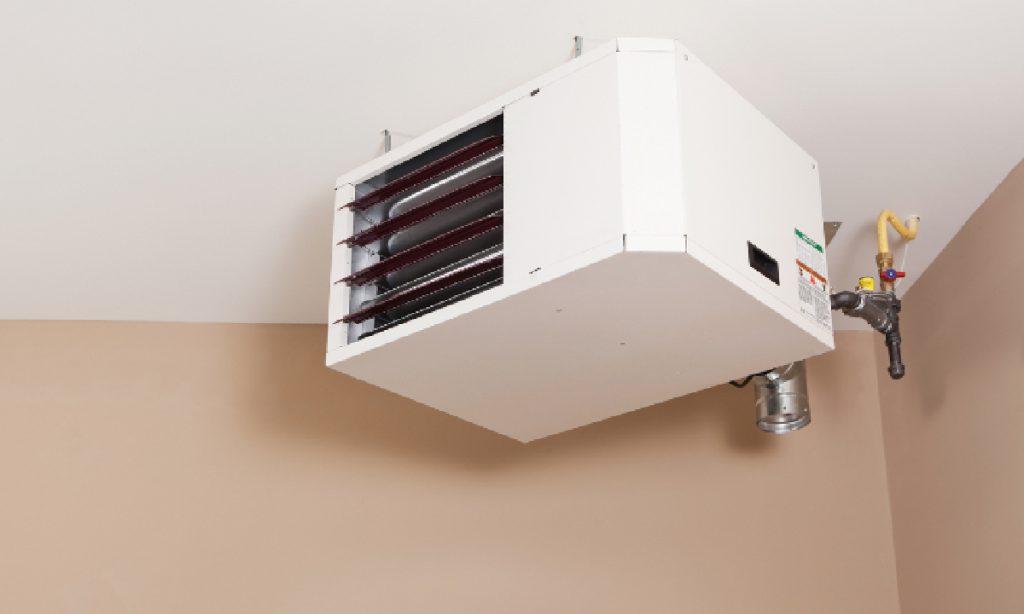Garage Heater Size Calculator
Are you tired of shivering in your garage while working on projects? Let’s warm things up! Choosing the right garage heater size can make all the difference between a cozy workspace and an ice box. We’ll walk you through the process of selecting the perfect heater, step by step.

Key Takeaways:
- Calculate BTUs needed based on garage size, climate, and insulation
- Consider fuel type, efficiency, and safety features
- Avoid oversizing or undersizing your heater
Understanding the Basics of Garage Heating
Before we dive into calculations, let’s get familiar with some key concepts. British thermal units (BTUs) measure heat output. One BTU raises the temperature of one pound of water by 1°F. When sizing a heater, we’ll use BTUs per hour to determine heating capacity.
Garage heaters come in various types:
- Gas (natural gas or propane)
- Electric
- Infrared
Each type has its pros and cons, but we’ll focus on sizing for now.
Factors That Influence Heater Size
Several elements affect how much heat your garage needs:
- Dimensions: Length, width, and ceiling height
- Insulation quality
- Climate zone
- Desired temperature increase
- How you use your garage
Let’s break these down further.
5 Actionable Step-by-Step Guide for Garage Heater Size Calculator
Step 1: Measure Your Garage
Grab a tape measure and jot down these measurements:
- Length (L)
- Width (W)
- Ceiling height (H)
Multiply these numbers to get your garage’s volume in cubic feet.
Volume = L x W x H
For example, a 24′ x 24′ garage with a 10′ ceiling has a volume of 5,760 cubic feet.
Step 2: Determine Your Climate Zone
The United States is divided into climate zones based on average temperatures. Find your zone to help estimate heating needs.
Step 3: Assess Your Insulation
Rate your garage’s insulation:
- Poor: Uninsulated walls, single-pane windows
- Average: Some insulation, older windows
- Excellent: Well-insulated, energy-efficient windows
Step 4: Calculate Desired Temperature Rise
Subtract the average lowest outdoor temperature from your desired indoor temperature.
Temperature Rise = Desired Indoor Temp – Lowest Outdoor Temp
For instance, if you want 65°F inside and it gets down to 20°F outside, your temperature rise is 45°F.
Step 5: Use the BTU Calculator Formula
Here’s where the magic happens:
BTUs needed = Volume x Temperature Rise x Insulation Factor x 0.133
Insulation factors:
- Poor: 1.5
- Average: 1.0
- Excellent: 0.5
Let’s put it all together with our example: 5,760 (volume) x 45 (temp rise) x 1.0 (average insulation) x 0.133 = 34,473 BTUs
Round up to the nearest available heater size, which would be 35,000 or 40,000 BTUs.
You Can Check It Out Garage Door Spring Size Calculator.
Recommended Heater Sizes by Garage Type
As a rule of thumb:
- 1-car garage (up to 300 sq ft): 20,000 – 30,000 BTUs
- 2-car garage (300-600 sq ft): 30,000 – 50,000 BTUs
- 3-car garage (600-900 sq ft): 50,000 – 80,000 BTUs
Remember, these are general guidelines. Your specific needs may vary based on the factors we discussed earlier.
Beyond BTUs: Other Considerations
While BTUs are crucial, don’t forget about:
- Fuel availability and costs
- Installation requirements
- Safety features
- Energy efficiency ratings
- Additional features like thermostats or fans
Maximizing Efficiency: Tips for Garage Heating
Want to get the most out of your heater? Try these tips:
- Beef up your insulation
- Seal air leaks around doors and windows
- Use a programmable thermostat
- Consider zoning for larger spaces
Common Sizing Mistakes to Avoid
Don’t fall into these traps:
- Oversizing: Wastes energy and leads to frequent cycling
- Undersizing: Struggles to heat the space adequately
- Ignoring future needs: Plan for potential garage use changes
- Overlooking local building codes: Stay compliant and safe
You Can Check It Out Garage Construction Cost Calculator.
Real-World Example: Joe’s Workshop Transformation
Joe, a DIY enthusiast, transformed his chilly 400 sq ft garage into a year-round workshop. He calculated his needs using our formula and installed a 35,000 BTU gas heater. The result? A toasty space where he can work on projects even in the dead of winter.
Environmental Considerations
Looking to reduce your carbon footprint? Consider:
- High-efficiency models
- Renewable energy options like electric heaters powered by solar panels
- Proper sizing to minimize energy waste
Troubleshooting: Is Your Heater the Right Size?
Signs your heater might be incorrectly sized:
- Undersized: Never reaches desired temperature, runs constantly
- Oversized: Frequent on/off cycling, temperature swings
If you notice these issues, it might be time to reassess your heating needs.
The Future of Garage Heating
Keep an eye out for emerging trends:
- Smart garage heaters with app control
- Improved energy efficiency technologies
- Integration with home automation systems
Wrapping Up
Choosing the right size garage heater doesn’t have to be a headache. By following this guide and using our BTU calculator formula, you’ll be well on your way to a comfortable, efficient workspace. Remember, a properly sized heater not only keeps you warm but also saves energy and money in the long run.
Got questions? Need more help? Don’t hesitate to consult a professional HVAC technician for personalized advice. Stay warm and happy tinkering!
